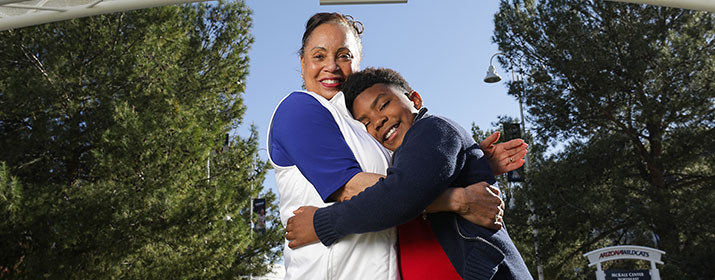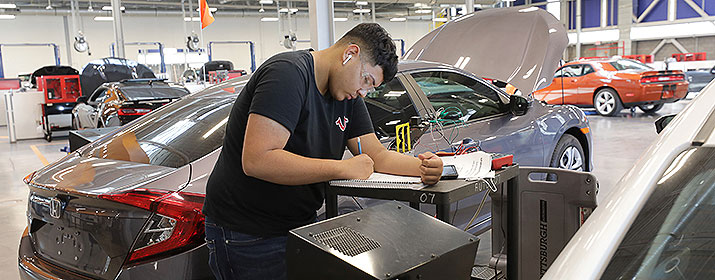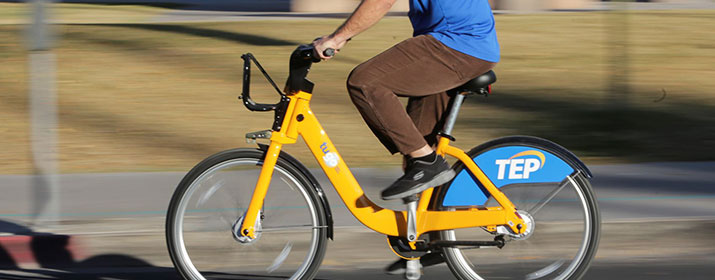
A new solar canopy at the University of Arizona will shade an outdoor study area while generating clean energy for campus using panels from TEP.
The new solar-and-shade structure will be installed this summer near the recently renovated Bear Down Gym and outside the new Bartlett Academic Success Center, a LEED-certified building designed to offer students tutoring, career planning and other support programs and services. The new facilities are part of the university’s new $81 million Student Success District.
TEP is donating use of solar panels and inverters, and will own and operate the array, which are scheduled for installation in June. The 29-kilowatt (kW) canopy will be installed about 20 feet off the ground, providing shade throughout the day to a circular study area. The partnership allows TEP to expand use of clean energy in our community while helping the university achieve its own sustainability goals and support the academic success and well-being of students.
“We are proud to support the University of Arizona’s nation-leading sustainability goals. Projects like this show how we can continue working together to achieve greater sustainability for our community,” said Erik Bakken, Vice President of Energy Resources and Chief Sustainability Officer. “This new canopy will generate solar energy on-site, helping to reduce carbon emissions.”
TEP proudly supports the school’s ambitious sustainability plans. All of the power that TEP provides to the university’s Tucson campus comes from new wind and solar resources, making the University of Arizona the largest research university in the country with a plan to offset all of its “Scope Two” emissions – those produced by its utility provider. TEP provides about 60 percent of the energy used by the Tucson campus, while the rest is generated on-site by solar panels and natural gas-fired resources.
TEP anticipates the development of additional solar structures on campus in the future.
“The University of Arizona is launching its first-ever Sustainability & Climate Action Plan process this spring to create a roadmap that will help us meet our ambitious climate and sustainability goals,” said Trevor Ledbetter, Director of the University’s Office of Sustainability. “Part of that roadmap will include plans to further electrify our Main Campus’ infrastructure and transition as many of our energy purchases as possible across the state away from fossil fuels and toward renewable resources.”
TEP and the university collaborated in 2020 on the installation of solar panels atop the Environment and Natural Resources 2 (ENR2) building. Its Rooftop Photovoltaic (PV)+ Project combines solar panels with rooftop garden plots in a system also called “agrivoltaics.” ENR2’s green roof is designed to help keep the panels cool, benefitting panel efficiency, while preventing evaporation of water from native plants below.
In 2021, TEP added the Wilmot Energy Center, a solar-plus-storage system south of Tucson, and our Oso Grande Wind farm in southeast New Mexico to its resource portfolio. Both systems produce clean power for the school’s main campus through a Large Scale Renewable Energy agreement. Through the partnership, TEP was able to expand its own clean energy goals. By 2035, TEP expects to produce 70 percent of our community’s energy from wind and solar resources while reducing carbon emissions 80 percent.
In September 2022, TEP and the university unveiled an interactive display to promote our agreement to deliver clean energy to campus. The custom-built machine features red and blue golf balls that race along steel tracks through tiny replica landmarks on campus. The balls represent clean energy generated at our new wind and solar-and-storage facilities.






